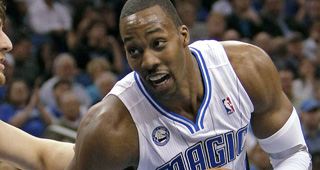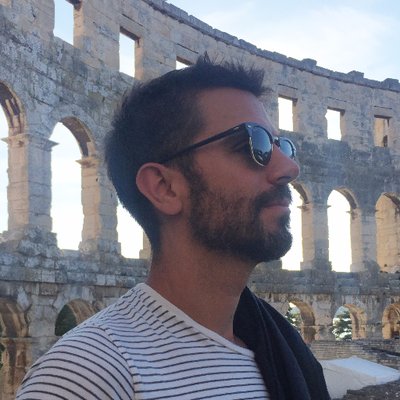Many of us came of age during an era in which most of the NBA’s best players were seven-footers who were as remarkable for their injury-free careers as their abilities as two-way future Hall of Fame centers. The run of Hakeem Olajuwon (1984), Patrick Ewing (1985) and David Robinson (1987) over four seasons, followed by Shaquille O’Neal in 1992 made the position astoundingly deep.
Even the second tier of Alonzo Mourning, Dikembe Mutombo and Brad Daughtery was outstanding.
If not for Michael Jordan and the Bulls, the 90’s would have been all about these centers taking turns winning titles.
Olajuwon won two when Jordan was playing baseball, Robinson and O’Neal began winning after Jordan’s second retirement when they were each paired with two of the top-20 players in basketball history.
For the younger generation who wasn’t yet alive when Sam Bowie was drafted, the center is a completely different animal. They may have seen the last few dominant shadows from Shaq and the subtle virtuosity of Tim Duncan’s game, but they clearly associate the center position with medical instability, undelivered promise and underwhelming ability.
Yao Ming, Greg Oden and Andrew Bynum headline the medical instability crowd.
Michael Olowokandi, Kwame Brown, Eddy Curry, Darko Milicic and Hasheem Thabeet are undelivered promise.
Tyson Chandler, Andrew Bogut and Emeka Okafor are all fine players, but have zero combined All-Star apperances.
Without a peer at the center position within shouting distance, no player with more value has been put on the trade block than Dwight Howard since Kareem Abdul-Jabbar in 1975 when he forced his way out of Milwaukee. Kareem was 28 when he arrived in Los Angeles and had already won two NBA MVPs and one title.
While Kareem was more accomplished than Howard is now and on his way to becoming the all-time leading scorer, he actually had a lot of company at the center position. In the 1974 MVP voting, for example, Hall of Fame big men Bob McAdoo, Bob Lanier, Dave Cowens and Elvin Hayes finished second through fifth.
At the time, Hayes was the oldest at 28, so basically take this current era of great young point guards, make them bigs and you get an idea of the quality depth behind Kareem.
Howard finished second in MVP voting last season, but no other center was even close to the top-10. Howard has been the All-NBA center four straight seasons and Defensive Player of the Year in three straight years. The Magic have been first, third and third in points allowed per 100 possessions during those past three seasons, as he covers for a team that has been filled with several defensively-challenged pieces.
On the offensive end, he tangibly improves every season. Howard is far from the type of low post player we all think he is capable of developing into, but he has made undeniable progress. At the very least, there is no pick-and-roll finisher that is better than Howard and he also gets a ton of easy buckets on put backs.
If you question the value of centers because of the dearth of quality ones, just look at the free agent market in recent days for Tyson Chandler, DeAndre Jordan and Marc Gasol.
The bidding for Howard has to be so outrageous that the team he ends up going to is gutted in the present (send back their second and third most valued players) and future (multiple first round picks). By pairing Howard with a top-10 player, the formula of Shaq/Kobe Bryant and Kareem/Magic Johnson is repeated and you merely need to surround those two with capable spot-up shooters and you’re good enough to compete for a title indefinitely. The risk of thinning out your depth is not nearly as great as letting the opportunity to acquire the only truly good center of his generation that just turned 26 and has never been hurt go to another team.
If you’re the Bulls, you pair Derrick Rose with Howard and send out Joakim Noah, Taj Gibson and Luol Deng.
If you’re the Thunder, you pair Kevin Durant with Howard and send out Russell Westbrook, Kendrick Perkins and James Harden.
If you’re the Lakers, you pair the final few seasons of Kobe Bryant with Howard and send out Pau Gasol and Andrew Bynum.
If you're the Clippers, you even consider dealing Blake Griffin if you have a shot at pairing him with Chris Paul if he can also be obtained.
If the Magic do not acquire a return for Howard of that caliber, it must be considered a fail on the part of Otis Smith.
If those specific teams do not aggressively pursue Howard, it must be a considered a fail on their part as well. There is no way those teams can afford to allow themselves be outbid by Brook Lopez and cap relief.
Shaq was an out of shape 32 when the Lakers traded him for Caron Butler, Lamar Odom, Brian Grant and a first round pick. His value at that time is probably half of what Howard's should be, but he was worth it for Miami since he delivered them a title in 2006.
Kevin Garnett had just turned 31 when Boston acquired him for Al Jefferson, Ryan Gomes, spare parts and two first round picks. He also delivered a championship.
The only way to acquire a player of Howard's caliber is typically by winning the lottery in a very special year. The Bulls, Thunder and Clippers experienced this in their own way with how they ended up with their franchise players, and they have done a good enough job of accumulating ancillary assets where trading for one more is possible in this unique situation, once in a generation situation.



